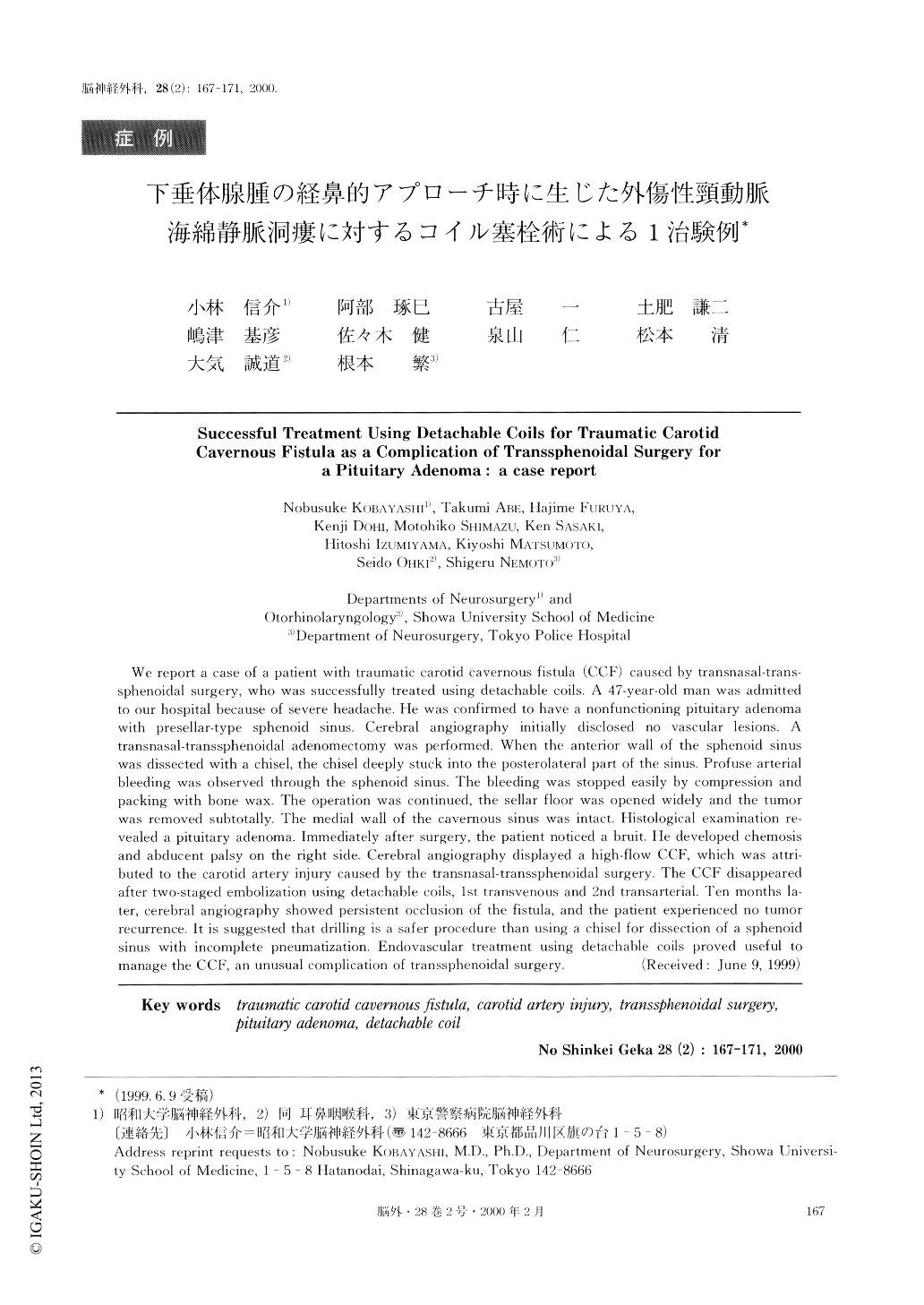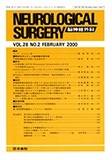Japanese
English
- 有料閲覧
- Abstract 文献概要
- 1ページ目 Look Inside
I.はじめに
現在経蝶形骨洞的手術は,下垂体腺腫に対する第一選択の治療法として定着している.しかし解剖学的にトルコ鞍の近傍には内頸動脈や脳神経が存在する海綿静脈洞が位置しており,これが重篤な術中や術後の合併症を引き起こす原因になりうる1,2,4,5,14-17).また外傷性頸動脈海綿静脈洞瘻(carotid cavernous fistula:CCF)の治療法としては,バルーンやコイルを用いた血管内手術が主流をしめるようになった1,3).今回われわれは下垂体腺腫の経鼻的アプローチの際に生じた外傷性CCFに対し,コイル塞栓術を施行し良好な結果を得た症例を経験したので,手術手技上の反省をふまえ,文献的考察を加え報告する.
We report a case of a patient with traumatic carotid cavernous fistula (CCF) caused by transnasal-trans-sphenoidal surgery, who was successfully treated using detachable coils. A 47-year-old man was admitted to our hospital because of severe headache. He was confirmed to have a nonfunctioning pituitary adenoma with presellar-type sphenoid sinus. Cerebral angiography initially disclosed no vascular lesions. A transnasal-transsphenoidal adenomectomy was performed. When the anterior wall of the sphenoid sinus was dissected with a chisel, the chisel deeply stuck into the posterolateral partof the sinus. Profuse arterial bleeding was observed through the sphenoid sinus. The bleeding was stopped easilyby compression and packing with bone wax. The operation was continued, the cellar floor was opened widely and the tumor was removed subtotally. The medial wall of the cavernous sinus was intact. Histological examination re-vealed a pituitary adenoma. Immediately after surgery, the patient noticed a bruit. He developed chemosis and abducent palsy on the right side. Cerebral angiography displayed a high-flow CCF, which was attri-buted to the carotid artery injury caused by the transnasal-transsphenoidal surgery. The CCF disappeared after two-staged embolization using detachable coils, 1st transvenous and 2nd transarterial. Ten months la-ter, cerebral angiography showed persistent occlusion of the fistula, and the patient experienced no tumor recurrence. It is suggested that drilling is a safer procedure than using a chisel for dissection of a sphenoid sinus with incomplete pneumatization. Endovascular treatment using detachable coils proved useful to manage the CCF, an unusual complication of transsphenoidal surgery.

Copyright © 2000, Igaku-Shoin Ltd. All rights reserved.


